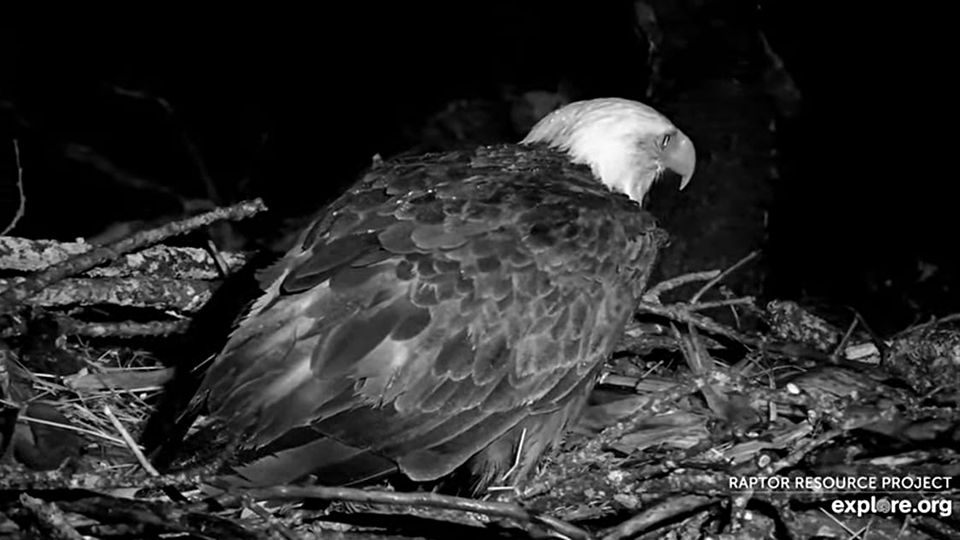
Egg watch is on at Decorah North after DNF had us pacing the delivery room floor for over three hours last night! We’ve discussed her most likely first egg date, so let’s take a look at her most likely time. Her schedule looks like this:
- 2022: DNF laid her first egg at 3:17 PM
- 2021: DNF laid her first egg at 1:44 PM
- 2020: DNF laid her first egg at 3:36 PM
- 2019: DNF laid her first egg at 3:23 PM
Even as DNF’s laying schedule advanced from the 21st of February (2019) to the 16th of February (2021 and 2022), her timing remained remarkably consistent. While wildlife loves to surprise us, I’d tune in between about 1:30 and 4:00 for the best chance to see her laying egg #1…especially if she spent the early part of the day on and around her nest.
Body Changes During Eggnancy
Have you noticed that DNF looks a little puffy right now? We’re not imagining her visible brood patch and slightly larger appearance! A 2000 study of female barn owls found that almost all of their pre-laying weight gain was due to water accumulation. From the study’s discussion: “…the gain in body mass observed in breeding barn owls is not due to an accumulation of energy reserves but of an accumulation of water.” The two species have very similar egg-production mechanisms and it seems reasonable to believe that water retention would be similar in both species.
The same study found that breeding females had fewer body lipids than non-breeding females, but they had more subcutaneous fat in the area of their brood patch. The accumulated fat caused their brood patches to increase in size! In short, DNF is gaining water weight and shifting fat to her brood patch in preparation for egg-laying and incubation. I’m sure that more than a few of us can relate to that!
Does it Hurt to Lay an Egg?
Do female eagles feel pain or discomfort in the final phase of laying? Let’s revisit the very last stage. After an egg has been coated with its hard calcareous shell, it moves from a female eagle’s shell gland into her vagina. Powerful contractions rotate it so it enters her cloaca pointy-end first, and her vaginal muscles and full-body contractions eject the egg from her cloaca into the waiting egg cup.
At one point, researchers thought there weren’t enough nerve endings in a female eagle’s vagina and inner cloaca to feel much pain. But they chirp softly and appear to feel discomfort during egg-laying. I believe the final stages of laying are uncomfortable, especially given the muscular contractions required to eject the egg. Having said that, we don’t know how painful or uncomfortable it is.
Egg laying is energetically expensive and female eagles usually fall into a deep slumber after laying their first egg, which often comes at or after dark. We’re wishing sweet eagle dreams to all of our eagle Moms this year!
 The Raptor Resource Project
The Raptor Resource Project The Raptor Resource Project
The Raptor Resource Project